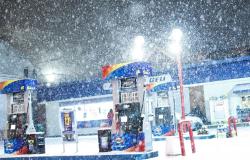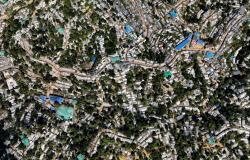Hello and welcome to the details of Alaska’s 52nd annual Iditarod sled dog race mushes to starting line and now with the details
Nevin Al Sukari - Sana'a - File photo of Iditarod 2023 winner Ryan Redington, whose grandfather Joe Redington Sr. is known as the founding father of the Iditarod Trail Sled Dog race, arriving at the finish line at 12:14 pm in Nome, Alaska, US March 14, 2023. — Reuters pic
ANCHORAGE, Alaska, March 2 — The world’s most famous sled-dog race gets under way today when 38 mushers and their canine teams, one of the smallest rosters of competitors ever, line up in downtown Anchorage, Alaska, to start the 52nd annual running of the Iditarod.
The untimed and ceremonial 18 km jaunt through the state’s most populous city will kick off the gruelling 1,000-mile test of endurance into the Alaska wilderness.
Timed competition begins tomorrow in the small community of Willow, north of Anchorage, with the winner expected to cross the finish line in the Bering Sea town of Nome about eight or nine days later.
At an annual mushers banquet held Thursday night to determine the starting order, 12-time contestant Anna Berington was chosen in a random drawing to lead off the 52nd edition of the Iditarod Trail Sled Dog Race.
Advertisement
Berington is among 11 women in this year’s contest, including at least three returning veterans who have finished multiple races in the top 10.
The Iditarod is one of the world’s few high-profile sporting events in which men and women compete on an equal footing.
One of this year’s veterans, Jessie Royer from Montana, has logged top-10 finishes in eight races going back to 2005, including third-place showings in 2019 and 2020.
Advertisement
Another, Mille Porsild from Denmark, has four top-10s since 2020, including ninth place last year and fifth in 2021.
Among this year’s favorites is 2023’s champion, Ryan Redington, who was also a top-10 finisher the three previous years. His grandfather Joe is known as the "father of the Iditarod" for his work in organizing the event at its inception.
A second front-runner is Dallas Seavey, who finished first in 2012 as the youngest Iditarod champion in its history, at age 25, and went on to win four more races, becoming one of only two mushers to ever have claimed the trophy five times.
Seavey, who has also won the Yukon Quest sled dog race twice, is the son of three-time Iditarod champion Mitch Seavey.
Yet another leading contender this year is Peter Kaiser, the 2019 champion and first Native Yup’ik musher to win. He was last year’s runner-up and a top-10 finisher in six other runnings.
Small roster
Berrington, Redington, Seavey and Kaiser all hail from Alaska, as do the overwhelming majority of contestants this year - 27 in all.
They are competing alongside six teams from the Lower 48 states — Utah, Montana, Idaho, Washington and New Hampshire — and four from other countries — Canada, Denmark, Sweden and Switzerland.
The number of competitors this year, 38, represents one of the smallest fields going back to the first year of the race in 1973, when 34 signed up. Last year was the smallest roster, with just 33 entries. In its heyday, the race featured rosters of entrants numbering in the 70s and 80s.
Nearly half of this year’s mushers, 16, are rookies.
The race, commemorating a famed dog-sled relay to deliver diphtheria serum to Nome in 1925, has come a long way since it began in 1973 as a low-budget novelty event consisting entirely of amateur mushers and taking 20 days to complete.
Now, top Iditarod contestants are professionals with high-tech gear bearing sponsors’ logos. Teams are tracked by global positioning satellite, and live coverage is streamed worldwide to audiences via the internet.
The modern race attracts major corporate backing, though in recent years animal rights activists who condemn the race as cruel to the dogs have pressured some companies to end support.
Climate change has wrought some of the greatest changes to the contest, as it has to much of life in the far north.
In 2020, flooding swamped the ultra-thin Bering Sea ice near the end of the race course, and three mushers and their dogs had to be rescued, forcing contestants who followed to be rerouted farther inland to avoid standing water.
During the Covid-19 pandemic, the course was altered to move checkpoints away from remote Native Alaska villages that remained extra vigilant against outbreaks of the virus due to scarce healthcare resources. — Reuters
These were the details of the news Alaska’s 52nd annual Iditarod sled dog race mushes to starting line for this day. We hope that we have succeeded by giving you the full details and information. To follow all our news, you can subscribe to the alerts system or to one of our different systems to provide you with all that is new.
It is also worth noting that the original news has been published and is available at Malay Mail and the editorial team at AlKhaleej Today has confirmed it and it has been modified, and it may have been completely transferred or quoted from it and you can read and follow this news from its main source.





